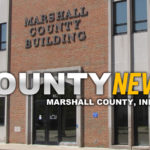U.S. Senators Todd Young (R-Ind.) and Gary Peters (D-Mich.) led a bipartisan group of Senate colleagues in calling on the U.S. Department of Transportation (DOT) to prioritize the implementation of connected vehicle technologies to make America’s roadways safer. In a letter, the senators shared their support for the DOT’s draft plan released earlier this year, which would accelerate
Cellular Vehicle-to-Everything (C-V2X) deployment. C-V2X is an intelligent transportation system (ITS) technology that allows for data sharing between vehicles, roadside infrastructure, and nearby road users to enable various roadway safety and efficiency applications – including collision prevention, traffic signal priority for first responders or transit vehicles, and improved school bus safety.
“We join public and private transportation stakeholders in calling on the Department to elevate the deployment of connected vehicle technologies like Cellular Vehicle-to-Everything (“C-V2X”) to a national priority,” the senators wrote. “Strong federal leadership from DOT in the rapid development and implementation of a C-V2X deployment plan will help achieve our mutual goals of eliminating traffic deaths and making America’s roads safer and more efficient for all users.”
The National Highway Traffic Safety Administration (NHTSA) estimates that 42,795 people died in motor vehicle crashes in 2022, staying consistent with 2021 figures which reflected the highest number of fatalities since 2005. NHTSA data also shows that vehicle-to-vehicle communication, such as C-V2X, could eliminate or mitigate the severity of up to 80 percent of non-impaired multi-vehicle light vehicle crashes.
“We support DOT’s commitment to make our roads safer for all users with the goal of achieving zero fatalities,” the senators continued. “Accomplishing this critical public safety objective will require DOT, other federal agencies, state and local partners, and other transportation stakeholders to adopt meaningful technology solutions, including deployment of C-V2X.”
Below are statements in support of the letter:
“INDOT supports and is utilizing connected vehicle technology to improve traffic safety. One of INDOT’s chief goals is to reduce serious injuries and fatalities across our transportation network. Embracing CV2X and other technologies will aid DOTs in addressing the country’s growing safety crisis in route to vision zero,” said INDOT Commissioner Michael Smith.
“Accelerating the deployment of C-V2X technology will support MDOT’s primary goal to improve safety for all road users,” said MDOT Director Bradley C. Wieferich. “Traffic crashes and fatalities are continuing to rise, and now more than ever we need to deploy every tool available to save lives. New vehicle technologies are improving driver safety every day, C-V2X could accelerate road safety beyond our expectations.”
“5GAA appreciates the support for C-V2X that Senator Peters and Senator Young have long championed as demonstrated with this letter to Transportation Secretary Buttigieg. We are delighted that several other Senators have joined them in encouraging the deployment of this critical safety technology on U.S. roads and highways. We look forward to continuing to work with Congress, the U.S. Department of Transportation, the FCC, the NTIA as well as state and local DOTs to facilitate widespread deployment of C-V2X technology,” said John F. Kwant, Executive Director of the Americas, 5GAA.
“The Intelligent Transportation Society of America (ITS America) strongly believes that vehicle-to-everything (V2X) technologies provide a singular opportunity to make roads safer, increase our global competitiveness, and create the modern transportation network all Americans deserve,” said Laura Chace, President and CEO of the Intelligent Transportation Society of America (ITS America). “We are grateful for the leadership of Senator Peters and Senator Young in championing this effort to continue to encourage Federal support for these critical transportation solutions, in order that we might truly approach Vision Zero on American roads.”
“Families, friends and whole communities in this country have felt devastating, life-changing loss due to traffic fatalities, all of which were preventable,” said Lorraine Martin, president and CEO of the National Safety Council and chair of the Road to Zero Coalition. “Advancing the use of C-V2X in our vehicles and infrastructure is key to saving lives on our roads. This is a much-needed plan and one we enthusiastically support.”
“As an organization dedicated to making biking safer and more accessible for everyone, PeopleForBikes understands the need for innovative technologies like Cellular Vehicle-to-Everything (C-V2X) to help address the staggering rise in deaths and injuries among vulnerable road users on American roads,” said Martina Haggerty, senior director of local innovation at PeopleForBikes. “Improved C-V2X technologies alongside the accelerated development of quality bike infrastructure can help us create a safer and more sustainable future for all road users.”
U.S. Senators Debbie Stabenow (D-Mich.), Cynthia Lummis (R-Wyo.), and Alex Padilla (D-Calif.) also signed the letter.
The full letter can be found below:
The Honorable Pete Buttigieg Secretary
U.S. Department of Transportation
1200 New Jersey Avenue, SE
Washington, D.C. 20590
Dear Secretary Buttigieg,
We write to express our support for the Department of Transportation’s (“DOT”) announcement of its draft Plan to Accelerate Vehicle-to-Everything (“V2X”) Deployment.1 We join public and private transportation stakeholders in calling on the Department to elevate the deployment of connected vehicle technologies like Cellular Vehicle-to-Everything (“C-V2X”) to a national priority. Strong federal leadership from DOT in the rapid development and implementation of a C-V2X deployment plan will help achieve our mutual goals of eliminating traffic deaths and making America’s roads safer and more efficient for all users.
As you know, roadway users across the nation continue to endure a sustained safety crisis. The National Highway Traffic Safety Administration (“NHTSA”) estimated that 42,795 people died in motor vehicle traffic crashes in 2022. This number is essentially flat from 2021, which had the highest number of fatalities since 2005 and the largest annual percentage increase in the history of NHTSA’s Fatality Analysis Reporting System. Many of these deaths are avoidable thanks to advancements in an ecosystem of roadway safety technologies like C-V2X technology.
C-V2X is an intelligent transportation system (ITS) technology that allows data sharing between vehicles, roadside infrastructure, and nearby road users to enable various safety and efficiency applications. These applications include vehicle collision warnings and warnings for vulnerable road users, school bus safety features, and transit signal priority for first responders. In fact,
NHTSA has previously estimated that safety applications enabled by vehicle-to-vehicle communication could eliminate or mitigate the severity of up to 80 percent of non-impaired multi-vehicle light vehicle crashes. With your direct engagement, C-V2X can become a core component of our modernized ITS. We are encouraged by DOT’s announcement of its draft plan for connectivity at its October V2X Summit. In addition, we believe a comprehensive deployment strategy for C-V2X should be a feature of DOT’s National Roadway Safety Strategy.
In 2020, the Federal Communications Commission (“FCC”) repurposed the 5.850-5.925 GHz band that Congress reserved for use by transportation safety technologies. At that time, the FCC stated that its actions would help “expedite and expand the deployment of ITS safety benefits,” and announced its intention to grant waivers to allow C-V2X deployment prior to the promulgation of a final ITS spectrum rule. The industry response has been overwhelming, with several states, cities, automakers, technology companies, and equipment manufacturers working with the FCC to deploy a range of impactful C-V2X use cases. We believe input from DOT and other federal stakeholders supporting the FCC’s efforts to facilitate immediate deployments of C-V2X technologies is critical to averting additional preventable traffic deaths while also improving roadway efficiencies for all users, both rural and urban.
We support DOT’s commitment to make our roads safer for all users with the goal of achieving zero fatalities. Accomplishing this critical public safety objective will require DOT, other federal agencies, state and local partners, and other transportation stakeholders to adopt meaningful technology solutions, including deployment of C-V2X. Given the opportunities that C-V2X deployment presents and the input DOT has received at recent DOT V2X Summits, we respectfully request your response to the following questions:
- The Department’s most recent update of the National Roadway Safety Strategy (NRSS) mentions V2X technologies for the first time, including “the use and deployment of technologies [including] ITS [and] interoperable V2X capabilities” as a “New Action” to be added to the NRSS’s Top Priorities in the coming years. Can you expand on what steps DOT is taking to advance this new priority and the timeline for it to be added as a top priority in the NRSS? As part of this “new action,” what specific opportunities is DOT exploring to facilitate and accelerate widespread deployment of transportation safety solutions like C-V2X?
- What actions is your Department taking – through the issuance of relevant program guidance, notices for discretionary grant programs, and public comments – to make non- federal project sponsors aware of current eligibilities for C-V2X and other technology-based safety solutions in federal funding proposals to reduce motorized and non-motorized roadway fatalities?
- To what extent is DOT working cooperatively with other federal agencies, like the FCC and the National Telecommunications and Information Administration, to advance deployment of C-V2X technologies and understand its safety benefits?
- Regulators in other parts of the world are increasingly incorporating V2X technologies into their New Car Assessment Program (“NCAP”) ratings and roadmaps. For example, as part of its call for massive V2X deployments by 2025, China is leveraging its NCAP program to create incentives that are accelerating V2X deployment. As a result, China is currently far ahead of the U.S. in both vehicle and infrastructure C-V2X deployments. In Europe, EURO-NCAP is also currently incorporating incentives in its rating scheme for V2X technology. Last June, several transportation industry stakeholders submitted comments to NHTSA specifically calling for the inclusion of V2X technologies in NHTSA’s NCAP roadmap. What plans do DOT and NHTSA have to incorporate V2X into the updated NCAP roadmap to spur deployments and maintain U.S. leadership in innovative safety technologies?
To realize the safety benefits of C-V2X deployment on our nation’s roadways, the implementation of a nationwide V2X plan that provides public and private transportation stakeholders a roadmap for deployment must be a national priority. We appreciate your efforts and timely response to our questions and stand ready to work with you and other agencies to promote lifesaving transportation technologies including C-V2X.











